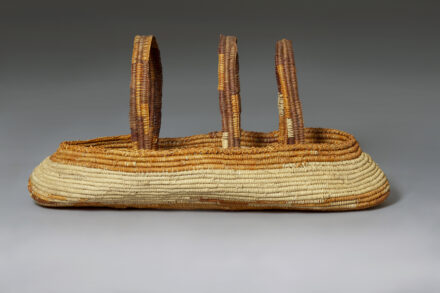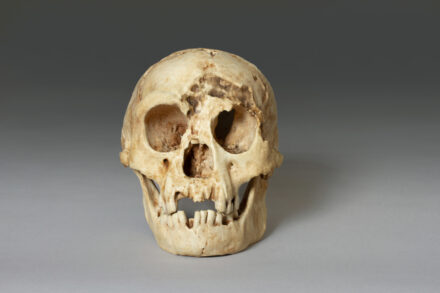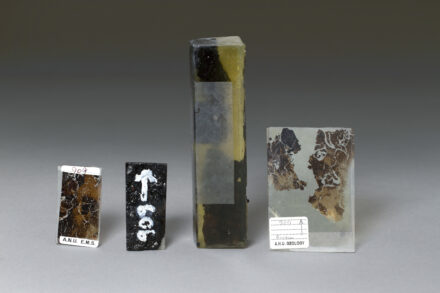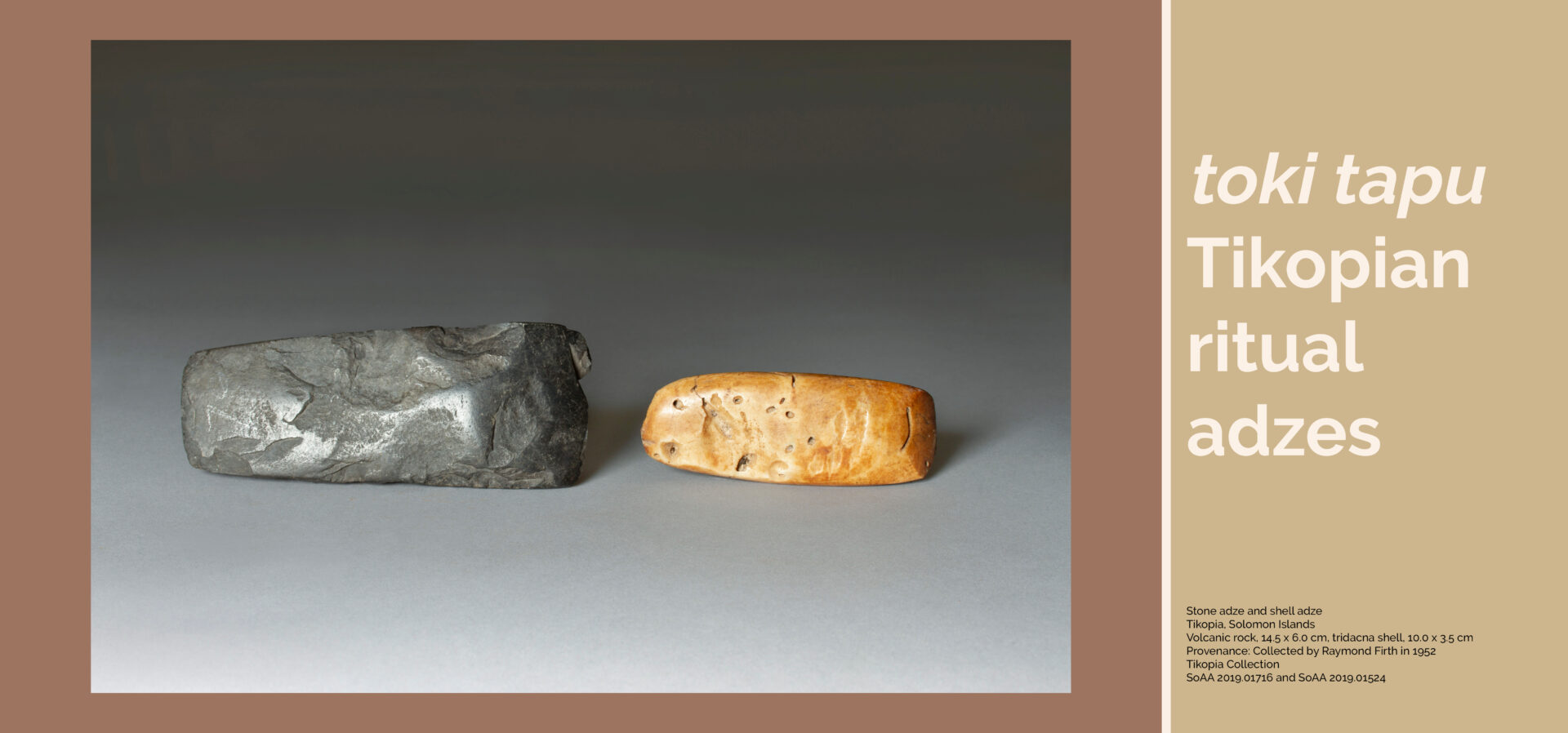
Article by Dr Guillaume Molle
Senior Lecturer in Pacific Archaeology,
School of Archaeology and Anthropology, ANU
The various categories of Tikopian adzes collected by Spillius can be defined based on the material of the blade, their shapes, dimensions, and their functions. Shell adzes were made of the Tridacna clam found on the fringing reef and were referred to as penu toki. While many shell adzes were used as working tools for mundane activities, the largest ones with oval section were very sacred (matua toki). The Tikopia also regarded shell adzes of intermediate size (pipi) as ‘supporters’ to the major sacred ones. Another category comprised adzes with blades made of dark-coloured volcanic stones known as toki uri (‘black adze’) that were imported to the island. In the 20th century, with the advance of western influence on the traditional way of life, ritual adzes made of steel or iron (toki fakatu) were progressively introduced.
Sacred adzes were before all important attributes of the chiefs and symbolized their power and mana, a quality permitting them to mediate relationships between the gods and the people. The adzes originated from the gods themselves and the most important ones were made by the female god Pakora and given to the Atua I kafika, the deified ancestor of the Tikopia. Adzes, sometimes named and associated to specific tutelar deities, were distributed among the chiefs of the different lineages, and kept in the prime temple of each clan, hidden from the people. They were only handled, with great sanctity, during the seasonal ceremonies.
In his seminal analysis of Polynesian religious practices, Raymond Firth described in detail the Tikopian ritual cycle known as the Work of the Gods in which the major adzes, imbued with sacredness, were especially used for the refurbishing and re-dedications of the fishing canoes. They first had to be properly hafted following a meticulous process witnessed and described by Spillius in 1952: Pa Fatumaru proceeded to the lashing of an adze with coconut sinnet and hibiscus cord in a criss-cross design. In the past, this technical operation was ritualized and if the wooden haft could be made by a commoner, the lashing itself had to be performed by the chief. On such occasion, the hafts of the supporter pipi shell adzes were also renewed. Similarly, only the chief could sharpen the blade. To do so, he rubbed it on a sacred stone located on the eastern side of the island before using it to hollow out and shape the canoe.
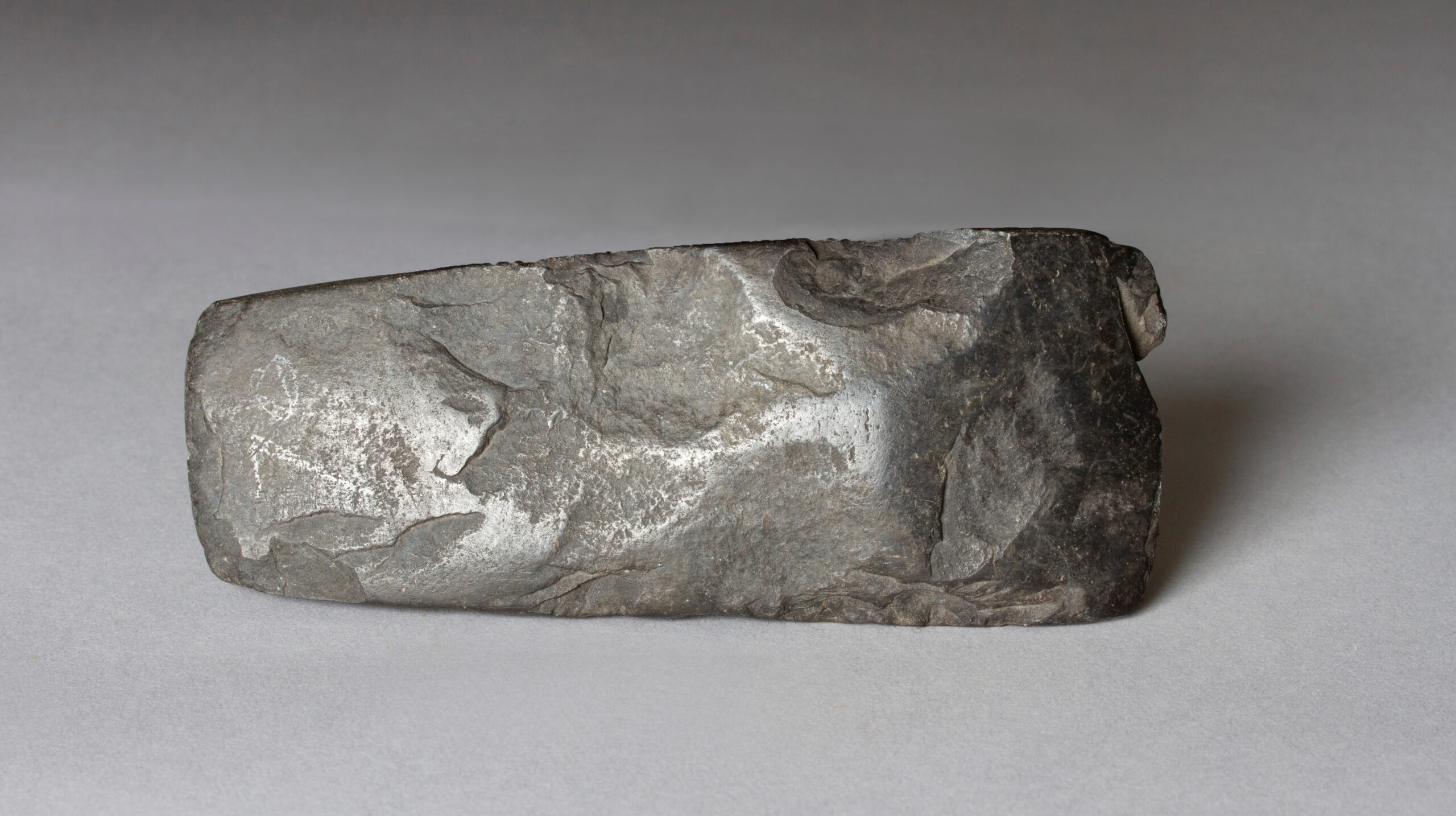
Stone adze
Tikopia, Solomon Islands
Volcanic Stone, 14.5 x 6.0 cm
Tikopia Collection
Firth stressed the value placed upon the stone adzes in comparison to the shell ones, which partly derives from their exotic origins. Stone resources are rare on Tikopia and unsuited for manufacturing tools. Firth and Spillius collected half a dozen ranging in size and quality. A few greenish stone blades would be local according to their informants, but the other large ones made of fine-grained volcanic basalts were undoubtedly exotic, sometimes attributed to Tonga. Many adzes are indeed of western Polynesian types and oral traditions recount that they accompanied immigrants to Tikopia from either Samoa, Tonga or Uvea. Recent pXRF analyses on obsidian and volcanic glass recovered from Kirch and Yen’s archaeological excavations on Tikopia shows that material was imported from Vanuatu and northern Tonga during the late aceramic Tuakamali phase. Future analyses on the stone adzes from the Spillius connection may similarly attest of regional exchanges. They further demonstrate that the Tikopia communities were far from being isolated but maintained a network of relationships with close and distant groups of islands through voyaging.
Most adzes had lost their primary religious function with the advance of Christianity which explains why Pa Fatumaru, one of the ritual elders from the Taumako chiefly line, agreed to give Spillius one during his visit. They were still regarded as tapu due to their residual ritual effect. However, the Tikopia were able to replace them by implements of higher efficiency without dissociating them from their symbolic value. These examples show that for the Tikopia, as for all Polynesian cultures, technological and ritual functions are not necessarily exclusive categories.
Further Reading
Bonshek, E 2017, Tikopia collected: Raymond Firth and the creation of Solomon Islands cultural heritage, Sean Kingston Publishing, Canon Pyon.
Firth, R 1959, “Ritual adzes from Tikopia”, In JD Freeman and WR Geddes (eds), Anthropology in the South Seas: Essays presented to H.D. Skinner, Thomas Avery, New Plymouth, pp. 149-59.
Kirch, PV & Yen, DE 1982, Tikopia: The Prehistory and Ecology of a Polynesian Outlier, vol. 238, Bernice P. Bishop Museum Bulletin, Bernice P. Bishop Museum, Honolulu.
McCoy, MD, Cervera, C, Mulrooney, MA, McAlister, A & Kirch, PV 2020, ‘Obsidian and volcanic glass artifact evidence for long-distance voyaging to the Polynesian Outlier island of Tikopia’, Quaternary Research, vol. 98, pp. 49-57, DOI: 10.1017/qua.2020.38.

